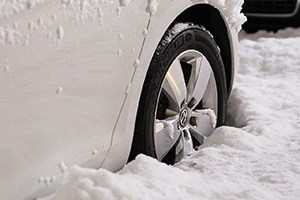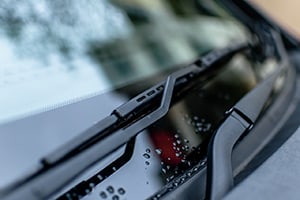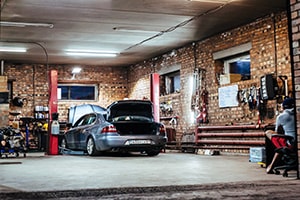Taking care of your tyres is important throughout the year, but during winter there can be a number of factors that make doing so all the more imperative.
With freezing temperatures, snow, ice and rain to contend with, understanding how to keep your tyres in the best possible condition and make use of the right sort of tyres to match the conditions you face is essential.
Check your tyres before each trip
A few simple checks can make all the difference to ensuring your vehicle is ready to face the rigours of winter, with an up-close examination of your tyres key to staying safe on the roads.
The first thing you should always check is that your tyres have sufficient tread depth to be able to displace any standing water.
Tread depth should always exceed the legal minimum of 1.6 mm and this can be checked easily by inserting a 20p coin into the tread and looking to see that the outer band of the coin is obscured. If you can still see the outer band of the coin after it is inserted, this means your tread depth has fallen below the legal minimum and they must be replaced.
The next thing to consider is the pressure of the tyres. You should consult your vehicle’s manual to find out the recommended psi of each tyre, and remember that this can be different for front and rear tyres.
Finally, another up-close examination is essential, this time looking out for any areas of excessive wear and tear around the entire circumference of the tyre. You should be searching for any rips in the tread or sidewall of the tyre, as well as possible bulges that may indicate a serious issue with the internals.
Safety is of utmost importance
Ultimately, your vehicle’s tyres are the only part of the car that physically comes into contact with the road. As a result, you’re solely relying on them to give you the grip, handling and braking that is so imperative when the weather takes a turn for the worse.
Each year, accident rates increase by around 20 per cent during the winter months in comparison to the rest of the year, so taking the time to check your tyres are in the best condition possible can help all road users to stay as safe.
Another change to consider at this time of year is the use of winter tyres. They are specially designed to provide optimal traction in colder temperatures of less than seven degrees Celsius. However, because of the softer compounds used in their construction, winter tyres can be more fragile and will wear more quickly than traditional, all-season tyres.
MyService.Expert offers regular reminders to our customers regarding the essential maintenance that keeps their vehicles in top condition. We also provide savings of up to 30 per cent on all parts and labour for customers, with thousands of garages across our national network where work can be carried out.





